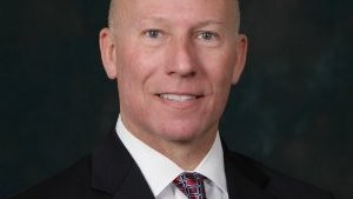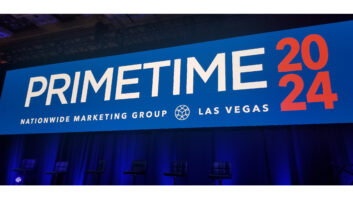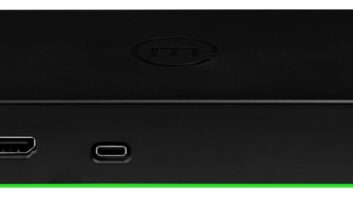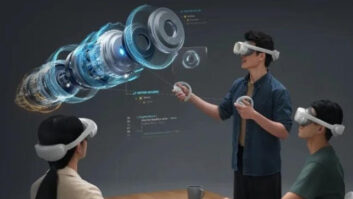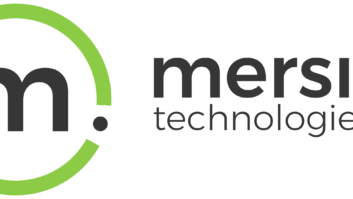Washington — The recent establishment of the Feb. 17, 2009, hard date for the end of U.S. analog television broadcasting has created an urgent need for a cross-industry consumer education campaign to avoid chaos and confusion among consumers that still rely on over-the-air broadcast signals.
That was the consensus of a multi-industry panel representing broadcasters, retailers, regulatory officials and consumer electronics manufacturers at the Consumer Electronics Association’s Entertainment Technology Policy Summit, here.
Concerning the $5 million consumer education allotment Congress built into the recent Deficit Reduction Act that established the analog cutoff date, Brandon Burgess, ION Media Networks CEO, said the budgeted amount falls far short of what is needed for the task.
“We are under-funded to the tune of $500 million,” Burgess said, comparing the U.S. effort to a smaller-scale transition that recently took place in Germany. “I think the education process is a hugely underestimated issue.”
Burgess said ION Media, as a broadcast network, is prepared to play a big role in the consumer education effort, and that collaboration with other companies, organizations and industries will be important in the process.
“I think we have to be more consensus oriented and lead with the chin a little bit, as opposed to just complaining about the lack of rules,” Burgess said.
Regarding the government-subsidized converter box program, he said rules need to be set adequately enough on how the box is going to be designed and deployed. He also suggested that the United States consider the United Kingdom’s model of selling a $50 set-top box, on which 30 channels are offered free of charge.
“Essentially, voluntarily a third of the U.K. has adopted that price point and that category of digital television,” he said.
Rick Chessen, a partner with Sheppard, Mullin, Richter and Hampton, and former chairman of the Federal Communications Commission’s (FCC) digital television task force, reminded the audience that the consumer education directive involves two separate objectives. The first is to educate the public about the benefits of digital television and the technologies that will be involved, helping them participate in the full DTV experience.
“The second part is to reach out to the last adopters who may have no interest in digital television and are perfectly happy with their analog sets, but will need to do something” to continue receiving signals when analog broadcasts go dark.
He suggested for some of these people the effort may require reaching out on “a home-by-home basis” to teach such consumers not only that they need a converter box, but what to do with it once they get it home. “How do they hook it up? How do they hook up their VCR? How do they hook up their antenna? These are some very practical issues that will require some very hands-on work at the local level.”
Alan McCollough, Circuit City chairman, agreed, added that his stores already have started posting “consumer alert” signs listing the kind of TV that consumers will need to go on receiving broadcasts after the cut-off date.
Due to the FCC’s digital tuner mandate, he reminded, “starting in March of next year, people who buy a TV are going to have a digital tuner in them anyway. So, for people who are buying a set here forward, the problem kind of goes away. That still leaves the much larger base of customers who aren’t in the market for a digital television and aren’t on the leading edge in terms of their adoption. How do we make those folks aware?”
He continued, “Then you have the problem of the converter box, which I think is a very problematic solution if it is a solution at all.”
Bryan Burns, ESPN strategic business planning and development VP, said the best way his network can communicate the coming change is to make the American public “aware of what we have to see,” adding that “at the end of the day it is all about content.”
McCollough agreed adding, “All this talk about making the consumer want to pull this forward instead of just jamming it down their throat, why don’t we worry about building the best content in the highest quality possible and put something out there that the customers want, and they’ll drag it forward. Show me the content.”
McCollough acknowledged that there is an increasing amount of HDTV content available today, “but it is far from complete.”
Burns pointed out that there was plenty of HDTV content available today covering the programs that the public is watching. “I don’t think it’s really important what you have on at 3 o’clock in the afternoon and 3 o’clock in the morning,” Burns said. “It’s not important to be 24/7 in HD. It’s important to have the shows that America wants to watch, and all of us together on the content side are really starting to get there.”
He added that “14 days from now, we are taking our entire commercial organization over to HD — 400,000 commercial units a year are available in HD. Every commercial position we run on ESPN HD and ESPN 2 HD will be in high definition. We are trying to bring the party forward too, at the same time.”
John Taylor, LG Electronics communications and government policy VP, said, “We’ve hit the critical mass of programming that’s driving the market, that’s driving consumer interest. We need to get the word out.”
Taylor pointed to a column he recently read in a local San Francisco newspaper devoted to “What’s On In HDTV.”
“That’s something that every newspaper in the country should be doing on a regular basis,” he said.
Bob Okun, NBC Universal VP, suggested that broadcasters need assurances before ramping up addition HDTV content.
“HDTV product has to be passed through [by multichannel video providers] to the viewer without being asked to pay a premium, and what we are putting out has to be protected. Those are the incentives that have to be built into the system.”
Okun said that from Universal’s side of the business, “movies are being pirated and downloaded over the Internet on these peer-to-peer networks. It is an issue in the broadband bills that are being considered by the House and the Senate. As we move to digital in television, a zero and a one is a zero and a one. So a broadcast signal can easily by pirated. This becomes a real issue for our affiliates. It becomes an issue as programming gets to be time shifted. When there is value in the program that is put out, it needs to be protected.”
Okun continued: “The broadcast flag is a critical issue for the broadcasters in terms of putting it in the bit streams to protect that digital content and closing what I call the analog loophole. It is a transitory issue, but again, it is product that can be easily pirated. Doing that will go a long way towards incentivizing us to put out additional product.”
As for the perceived large price disparity between a digital TV and an analog TV, Circuit City’s McCollough reminded the audience pricing will drop significantly by the 2009 cut off date.
“You have a lot of manufacturing and a lot of time to drag the costs down,” McCollough said. “I think there will be a lot more interest in putting OCAP [digital-cable ready] tuners in products going forward.”
LG’s Taylor agreed, adding, “We also are believers in OCAP, but in parallel, our consumer electronics industry and the cable industry need to complete the negotiation on a two-way nationwide plug-and-play agreement that would be broader than just OCAP. We need the entire package wrapped up in a bow that can go out nationwide.”
Meanwhile, as the cutoff deadline approaches, Chessen said an “underappreciated concern” was the need to get broadcasters ready for the transition.
“What we want to do at the end of the transition is have broadcasters on [the air in digital] serving the same areas that they served in analog, so that when analog goes away consumers will continue to receive the same signals,” said Chessen. “I think there is a lot that has to happen before we get to that goal.”
He added, “I would love to see the FCC, probably in their third periodic review, raise this issue and make sure that we are on top of it. There is a lot of work to do to get broadcasters to the point.”
Chessen called on the FCC to come forward and explain how the country is going to make the transition by the 2009 date, adding that from the broadcasting side “this is a complicated dance that has to happen over the next few years.”
He explained that some 200 broadcasters are still not broadcasting a digital signal, and at least half of all countries broadcasting digital stations are operating in low power, “and need to ramp up that power to reach their full market area.”
Chessen said that based on what’s happened so far he expects to see hundreds of stations filing extension requests as FCC deadlines near for them to be at full power.
“Then you’ve got 500 stations or more that will be moving channels at the end of the transition,” Chessen added. “My concern is that a lot of this keeps getting put off to 2007 or 2008, and then in 2008 in the middle of winter, when tower crews can’t operate in much of the country, a lot of broadcasters will still need new equipment.”




